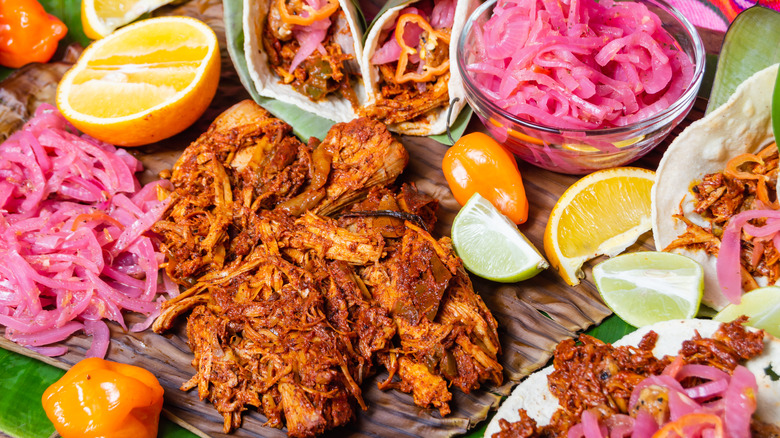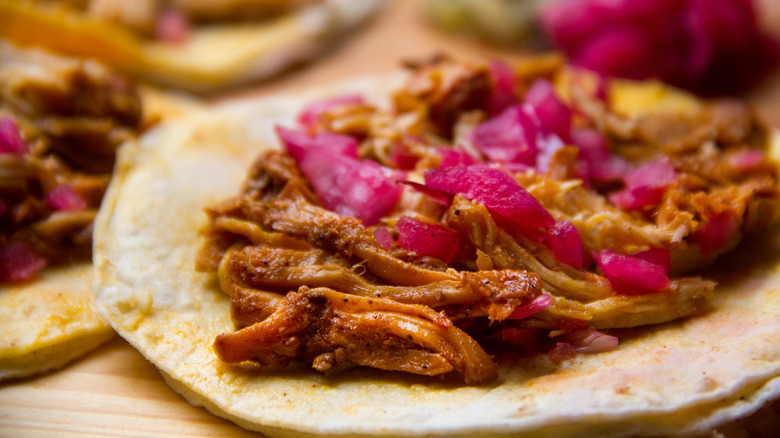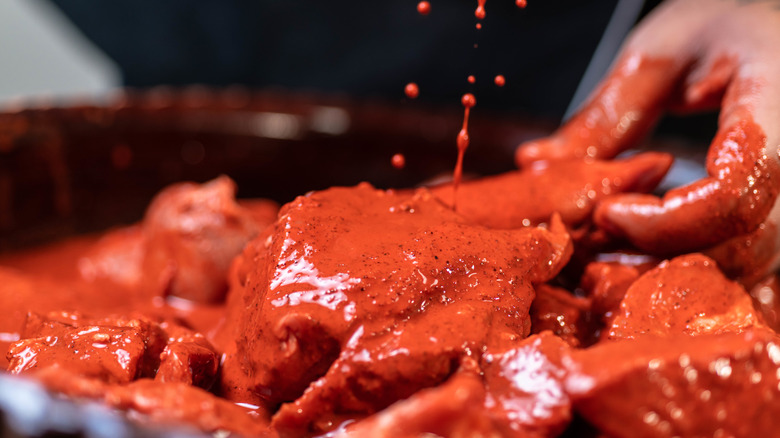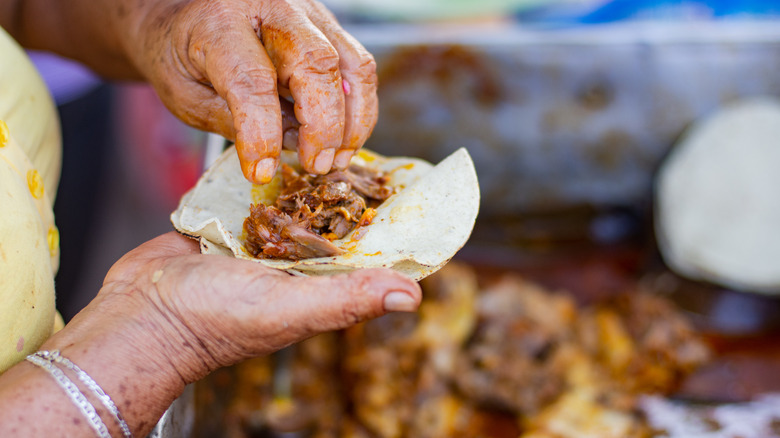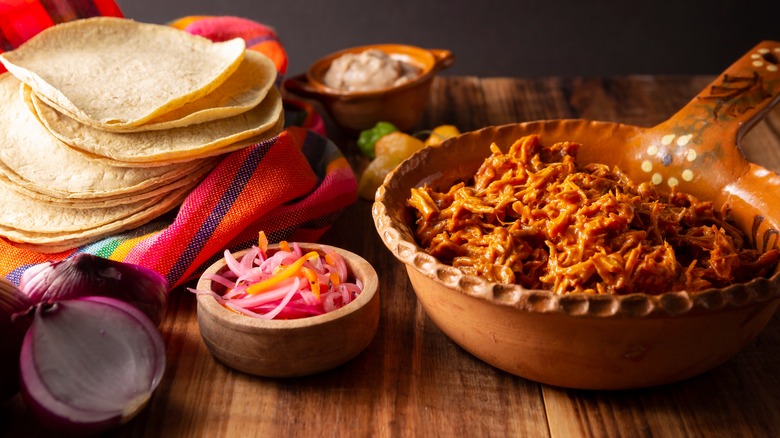Cochinita Pibil: The Yucatán's Famed Barbecue Pork Dish
In Mexico, tacos come in all shapes and sizes, from tantalizing al pastor to crispy fish tacos. Such a significant variation is encompassed in various regional specialties, with every state known for its unique dish. Yucatán's addition to the mix is the delectable cochinita pibil, a type of slow-cooked pork.
Incredibly juicy in texture and with a vivid orange color, it's a memorable food from the first bite. The flavor is earthy, a little sour, and smokey, all underpinned with a bouquet of spices used during marination. Packed into a warm tortilla, with a dash of salsa on top, it's a delightful showcase of the beauty of slow-cooked pork, especially in tacos.
And while traditionally prepared in an underground oven much like barbacoa, chefs have innovated recipes with home appliances. All the more reason to seek out a serving, or create your own. Let's dive into what cochinita pibil is all about.
History of cochinita pibil
This tender pork dish hails from the Yucatán region of Mexico, where it arose from a combination of Mayan and Spanish culture. In fact, even the name is a mixture of civilizations — pibil derives from the Mayan word píib, which means earth oven, and cochinita is Spanish slang for small pig.
Before the Spanish arrived in what is now Mexico, the Mayans prepared a similar dish from wild boar, pheasant, and venison in an underground oven. The dish, which was slow-cooked overnight, was also used in religious contexts and placed on the altar of deceased relatives. It continues to be especially popular during holidays, like the Hanal Pixan festival, or the date of the Immaculate Conception.
Once the Spanish introduced pigs in the 16th century, pork became the chief protein of the dish. The use of habaneros and annatto seeds continued, and citrus was introduced to the preparation. The regional sour Yucatán orange favored today is most likely a mutation of Seville oranges introduced by the Spanish. The banana leaf that often wraps cochinita pibil was also brought from the Old World since the plant is not native to Mexico.
Ingredients in cochinita pibil
Cochinita pibil is built around pork, with fattier cuts like the leg or shoulder preferred. The meat is marinated, with orange juice as the preeminent tenderizer. Since Yucatán sour oranges are difficult to find outside of Mexico, the flavor is often replicated with sweet orange juice with either lemon or grapefruit juice.
In addition to garlic, an extensive medley of spices is added to the marinade — cinnamon, cloves, cumin, oregano, sometimes allspice, and most notably annatto. Also known as achiote, this seed adds a peppery, earthy flavor, as well as creates the dish's characteristic red color.
Banana leaves are essential to cooking, retaining moisture, and creating the desired texture. Once prepared, the dish is topped with pickled red onions and spritzed with lime. The pork is served as a taco, alongside a warm bundle of corn tortillas. Let's dive into how the slow-cooked deliciousness gets prepared.
How cochinita pibil is prepared
Like pulled pork in American barbecue, cochinita pibil is all about patience in slow preparation. After the pork is cut into chunks, it is marinated for several hours in a mixture of spices and citrus. Traditionally, the cochinita pibil would then go into the traditional underground pib oven overnight. Fired by wood and hot stones, nothing can quite replicate this cooking method. However, chefs have found some more easily-accessed alternatives.
The most straightforward one wraps the pork in banana leaf, and then aluminum foil, before slow-cooking in an oven with the lid on. This replicates the succulent qualities, though it doesn't quite introduce the smokey flavor in traditional preparations. It is possible to finish the dish with a smoking wood chip for the aroma.
However, for the best cochinita pibil, it's best cooked outside like in Mexico. Either a smoker or a grill lined with hardwood and coals will achieve the tantalizing, smokey, melt-in-your-mouth result.
How cochinita pibil is served
Once the steaming-hot cochinita pibil is unwrapped, it's shredded with a fork. Any juices that seeped into the mixing bowl are then spooned over the top. Traditionally, it comes with a topping of pickled red onions, lime, and warm corn tortillas.
And to complete the taco experience, there's also a salsa, nearly always concocted with a habanero base. Common variations include salsa called Xnipec crafted with orange juice and oregano, or salsa made with roasted garlic, cilantro, and lime. In addition to tacos, cochinitia pibil is also enjoyed as a torta or quesadilla.
Especially in the Yucatán state of Mexico, it's often prepared in huge volumes and then shipped out to taco stands and restaurants. The dish is so beloved, it's also readily found in the freezer section of grocery stores. However, a new wave of chefs is reinterpreting cochinita pibil, cooking it from scratch with unique renditions. Wherever it's sourced, nothing quite beats a fresh batch that's steaming hot and ready to dive into.
